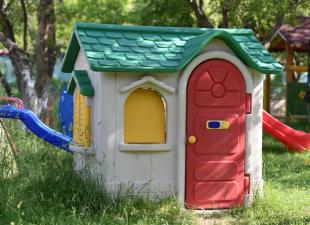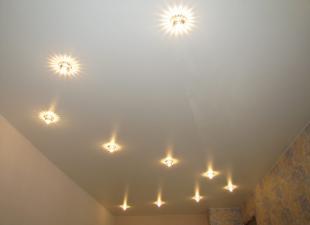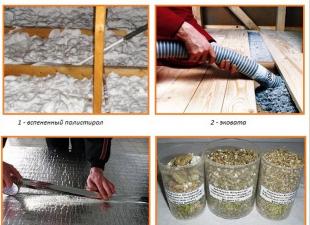In this article, we will try to explain to those who are not familiar with how to properly prepare clay mortar for the oven. We will tell you about the mistakes that should not be made, otherwise mixing the mortar for the furnace is an important component in laying bricks.
A well-mixed mortar of clay on a brick
So let's start in order. On average, you need three buckets of mortar for one hundred bricks for laying stoves. Brick and clay mortar, ideally, practically do not differ in composition. They have such a property as to tolerate heating over 1000 degrees. Professional stove-makers for mixing the mortar, the quality of the clay is determined by touch, and the masonry is performed with a seam thickness of 3-4 mm. If you make thicker joints, then the clay will not be able to withstand the enormous loads from the side of temperatures and will begin to crumble. At these places, cracks will begin to form, into which air will flow, which means that traction will begin to deteriorate, fuel consumption increases and the risk that a huge amount of carbon monoxide will flow into the bath increases.
The golden rule in kiln masonry is that the less clay is used, the better its quality. And yet, clay is the very material that gives the stove-maker the right to make mistakes. For example, if the masonry on cement mortar can be disassembled, but it is extremely difficult, and it will bring a lot of losses due to the fact that the cement sets well, but the mortar made on clay can be disassembled quite easily and without any losses. During repair work, facing material and bricks laid on clay mortar can always be preserved.
There is an opinion that the strength of the solution on clay can be slightly increased at least somehow with the help of all kinds of additives. For example, add table salt, cement. The proportion is as follows: for 10 kg of clay, 1 kg of cement, or 100-150 g of table salt. This will slightly increase the strength of the mud. Although our great-grandfathers hardly used cement or table salt. After all, they had stoves both in baths and in houses for over 100 years.
The fact is that if it is enough to choose the right components, then the clay solution will not require any additives, and the recommendations are like a small safety net.
For masonry, the mortar should not be rigid, flexible or moderately greasy. If you make the solution greasy, when it dries, it decreases in volume and begins to crack. If too skinny, then it will not give too good strength. Clay for creating a solution is different in terms of plasticity or fat content. There are such deposits of clay, from which nothing needs to be done at all, here and so a solution of normal fat content. As a rule, no sand is added to it at all. In some cases, it is necessary to mix two or three types of clays, which are taken from different deposits and strictly dose them.
To begin with, mix dry, then mix with water. If the clays are oily enough, then sand is added to them. The amount of sand ranges from 0.5 to 5 parts by volume. The most popular ratio of sand to clay in the ready-made mortar is 1: 2 or 1: 1. The amount of water will be approximately 1/4 of the volume of all clay. Oily clays require huge amounts of sand. Here it is necessary to add fine-grained sand without the content of foreign impurities. It must be sieved through a special clean sieve in the light with meshes of 1.5 × 1.5 mm, at least. If the clay is too thin, then you have to remove excess sand.

Clay for mixing clay mortar
Clay Quality Testing Methods
Imagine when we sculpt a ball from the made solution and throw it on the floor. If our ball crumbles, then this means that there is a lot of sand in the solution, but little clay, if cracks appear in the lump, this means there is a lot of sand in it. But, and if the ball is completely intact, this means that the solution is either oily, or everything is fine in it.
Method number 1
We take 0.5 liters of clay, add a little water to it and knead it thoroughly with our hands until it can completely suck in all the water and does not stick to our hands. When we prepare a tough dough, we mold a ball into a diameter of 40-50 mm, and from such a ball we make a cake with a diameter of 100 mm. Under normal conditions, they are dried for about 2-3 days. If cracks begin to appear on the cake or ball during this period of time, it means that the clay is quite oily and requires the immediate addition of sand. If there are no cracks on the cake or ball after drying, and the ball, while falling from a height of 1 meter, did not crumble, then this clay is completely ready to create a solution. Skinny clays will not crack. They do not have great strength, you need to add a little oily clays to them. Clay or sand is added in several steps, each time controlling the quality of the produced solution.
Method number 2
We take 2-3 liters of clay, place it in some container, fill it with water, knead the lumps and mix with a jelly. It may happen that the clay is too clinging to the jelly (it envelops it to the fullest), which means that it is a greasy clay. A certain amount of sand must be added to such clay. If there are some separate clots on the jumper, then such clay will be considered normal. A solution is prepared from it without any addition of sand. It happens that the paddle is covered, but with a thin layer of clay. This will mean that she is skinny, and here you need to add oily clay in the right quantities. I also want to say that you should not overclock, otherwise you can get the opposite effect. Make too thick clay out of skinny, or vice versa.
Method number 3
This method is the most correct for determining what quality our clay is. 0.5 l. We knead the clay until a very steep dough is thick and knead it thoroughly with our hands, as mentioned in the first method. Roll a ball with a diameter of 40-50 mm from the made clay dough by hand. We place this ball between two smooth (jointed) boards and smoothly apply force to the top board, gradually squeezing the ball. The compression must be repeated until cracks form on the ball. In this case, one or another degree of fat content of the clay depends on the nature of the cracks formed and on the amount of flattening of the ball.
If the ball was made of skinny clay, at the slightest pressure on it, it will disintegrate into pieces. A ball made of a thicker clay than loam, when pressed by 1 / 5-1 / 4 of its diameter, already cracks. From normal clay, the ball will crack at 1/3 of the diameter crush. But from oily clay, the ball will give very thin cracks when it is compressed by 1/2 of the diameter.
The flagellum smoothly stretches out of the fatty clay, gradually becomes thinner, while forming sharp ends at the site of the rupture, and during bending, a crack does not form at all. From normal clay, the flagellum smoothly stretches and breaks off when its thickness at the site of the rupture becomes slightly less than the thickness of the flagellum, by about 15-20%, but small cracks form during bending. From skinny clay, the flagellum stretches little, gives an uneven rupture, and when bent, many tears and cracks form.
If you try to repeat two or three times such a test as squeezing a ball or bending a flagellum, then you should not have any doubts about the quality of the clay. Your sauna stove will stand very firmly and reliably.
During the test, it is necessary to mix two or three clays, and remove or add sand to it. It is in this way that the best proportions of clay mortar can be found. Well, or, as a last resort, if you made a mistake, it is not very scary if this error was in the direction of the fat content of the solution. Experts say that this will not significantly affect the operation of the furnace. If we take the other way around, that there will be an excess of sand in the solution, then everything is much more dangerous here, the strength of the masonry can seriously affect. The thicker the mortar, the more cracks will appear when plastering the oven. But this is not the worst thing, these cracks can be eliminated by grouting a more or less lean solution (a solution with a large addition of sand).

Masonry kiln with clay mortar
Correct mixing of the solution
After the clay and sand have been selected, the solution must be mixed correctly. This is an equally important part in the masonry of the stove, because we picked up the clay, and knead it correctly, you also need to have a lot of knowledge.
Method number 1
To create a solution, we soak the clay for 2-3 days in a huge wooden box, which is lined with tin, or in a simple iron "trough". Next, we put on rubber boots and, gradually adding sand, trample it until there is not a single lump of clay left. Clay lumps can be broken with a specially made rammer. Then we probe the solution with our hands and grind (or remove) the remaining pieces from the clay. A perfectly mixed mortar, where clay and sand are placed in the correct proportion, should not linger on the steel shovel, but rather slide easily. If, however, a uniform layer of mortar (3-4 mm) is applied to the brick, put the second brick on top, pressing it down (knock), after 5 minutes try to raise the top one, then with excellent mortar quality, the brick that was below should not come off. This is a properly prepared solution. If a stick is lowered into a normal clay-sand solution, then a very insignificant trace will remain on it. Through a measured greasy solution on a stick, it will leave a kind of film; but the skinny one should not leave anything.
Method number 2
At a time when the clay is normal in terms of fat content, it does not require the addition of sand, then they do this. They make a flooring of boards or an ordinary shield in the size of 1.5x1.5 m, which is called a striker. It is not recommended to mix clay on the ground at all, of course, earth and unnecessary impurities will get into it. Clay is applied to the firing pin in layers and wetted with water. If the clay has softened, it is shoveled several times and shoveled into a heap, making it a kind of a kind of bed with a height of 300-350 mm. The length of the bed is made depending on the amount of clay present. Further along this bed we make blows with the edge of a wooden shovel, supposedly cutting off the plates from it chunk by chunk. Lumps from blows crumple, break. Foreign impurities and round stones are removed during operation. Then the clay is shoveled again, shoveled into one bed and crumpled again, making blows with a shovel. This operation must be repeated 3-5 times until all the lumps disappear.
For example, if we add sand to the clay, then we need to act so correctly. We pour sand into a fairly wide bed, make depressions in it, pour clay in layers, moisten it with water and fill it with sand on top, hold for the right time until the clay is completely softened. Then we shovel it many times, collect it in a garden bed and mimic it with a shovel as described earlier. You need to crumple the clay until it can completely mix with the sand and become homogeneous. In this case, you need to have so much clay in the solution so that it can fill the gaps between the grains of sand.
A perfectly mixed solution with the required amount of water and sand should not stand on a shovel or trowel, but slide, but at the same time not spread over them.
Method number 3
If clay is used with good fat content, which does not require the addition of sand, then it is poured into a barrel or box in layers, moistened with water, but, and poured on top. The clay gets soaked in a few hours, then it is thoroughly mixed and filtered through a sieve with cells in the light of 3 × 3 mm. When adding water at the workplace, bring the solution to a certain density.
At the time when sand is added to clay, all components are measured in certain doses, all materials are individually sieved through a sieve. After the clay is soaked, filter it, adding it to the sand, mix and filter it again
Clay solutions should be stored in a sealed container so that no foreign objects get into it. The time spent on filtering the solution or sifting the materials, with the oven laying, pays off with interest.

Ready-made clay mortar for brickwork
Conclusion!
As we can see, the preparation of clay solution for the construction of a stove in a bathhouse or even in your own house is a responsible business. The quality of the folded oven depends on that. After all, here you need to choose the right clay and mix the solution wisely, otherwise there will be no point, even if a good specialist in laying stoves is engaged in this business. Therefore, the clay slurry must comply with all rules and regulations by 100%.
 parlini.ru Repair of an apartment, a summer residence and a house.
parlini.ru Repair of an apartment, a summer residence and a house.


